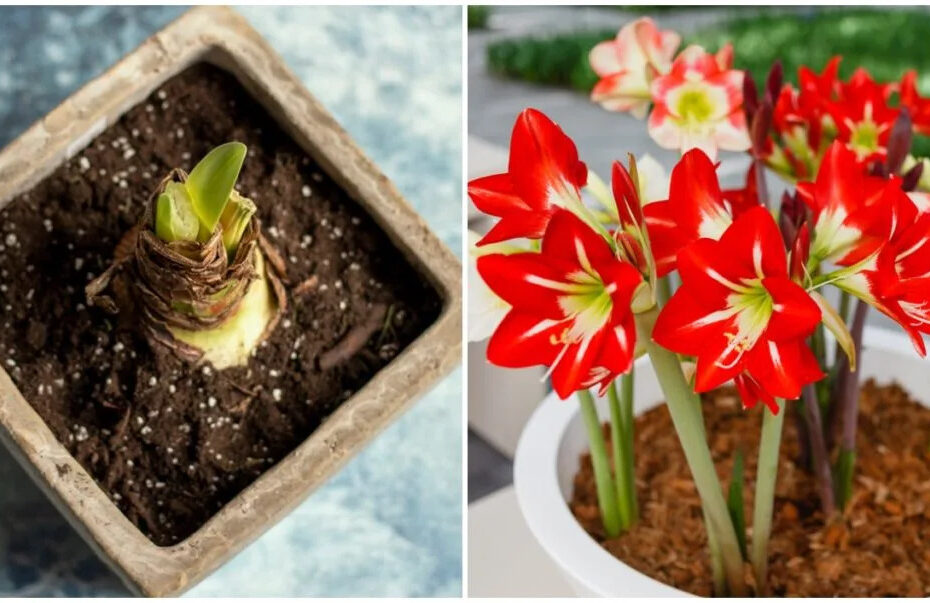Amaryllis plants, known for their stunning trumpet-shaped blooms, are popular choices for indoor and outdoor gardens alike. With proper care and attention, these vibrant flowers can brighten up any space with their colorful display. In this comprehensive guide, we’ll explore the essential steps to successfully grow and care for amaryllis plants, from selecting the right bulbs to nurturing them through their growth cycle. Whether you’re a seasoned gardener or a novice enthusiast, you’ll discover valuable insights to help your amaryllis thrive and flourish.
Choosing the Perfect Amaryllis Bulbs
The first step in growing healthy amaryllis plants is selecting high-quality bulbs. When choosing bulbs, opt for firm, plump specimens without any signs of damage or rot. Larger bulbs typically produce more robust blooms, so prioritize bulbs that are at least 2 to 3 inches in diameter. Additionally, consider the variety of amaryllis you prefer—whether it’s a classic red, white, or pink variety, or one of the newer hybrids with unique color patterns.
Optimal Growing Conditions
Amaryllis plants thrive in bright, indirect light, making them ideal for sunny windowsills or well-lit indoor spaces. Place your amaryllis in a location where it can receive at least six hours of sunlight per day. During the growing season, maintain a moderate temperature between 65 to 75 degrees Fahrenheit (18 to 24 degrees Celsius). Avoid placing your amaryllis near drafty windows or heat sources, as extreme temperature fluctuations can stress the plant.
Planting and Potting Mix
When planting your amaryllis bulbs, choose a well-draining potting mix that retains moisture without becoming waterlogged. A mix of equal parts potting soil, perlite, and coarse sand works well for amaryllis plants. Select a pot with drainage holes to prevent water from pooling at the bottom, which can lead to root rot. Plant the bulb with the top third exposed above the soil line, and water thoroughly after planting to settle the soil around the bulb.
Watering Routine
Proper watering is essential for the health and vitality of your amaryllis plants. During the active growing season, water your amaryllis thoroughly whenever the top inch of soil feels dry to the touch. Allow excess water to drain away, and avoid leaving the pot sitting in water, as this can lead to root rot. As the plant enters its dormant phase, typically in late summer or early fall, gradually reduce watering to allow the foliage to wither and die back naturally.
Fertilizing Schedule
To encourage vigorous growth and abundant blooms, fertilize your amaryllis plants regularly during the active growing season. Use a balanced liquid fertilizer diluted to half strength, applying it every two to four weeks. Alternatively, you can incorporate a slow-release fertilizer into the potting mix at the beginning of the growing season to provide a steady supply of nutrients over time. Avoid over-fertilizing, as this can lead to excessive foliage growth at the expense of flower production.
Supporting Blooms and Staking
As your amaryllis plants grow, they may require support to prevent their tall flower stalks from bending or toppling over. Install stakes or bamboo supports around the base of the plant, being careful not to damage the roots or bulb. Gently tie the flower stalks to the stakes using soft twine or plant ties, allowing them to grow upward and bloom beautifully without drooping.
Dealing with Pests and Diseases
While amaryllis plants are relatively resistant to pests and diseases, they may occasionally encounter issues such as aphids, spider mites, or fungal infections. Regularly inspect your plants for signs of pest infestation, including yellowing leaves, distorted growth, or sticky residue. Treat affected plants promptly with insecticidal soap or neem oil, ensuring thorough coverage of both the foliage and stems. Additionally, maintain good air circulation around your plants to prevent the development of fungal diseases, such as powdery mildew or botrytis.
Conclusion
Growing and caring for amaryllis plants is a rewarding experience that allows you to enjoy the beauty of their vibrant blooms year after year. By following the tips and techniques outlined in this guide, you can cultivate healthy, thriving amaryllis plants that add color and elegance to your indoor or outdoor garden. Whether you’re a novice gardener or a seasoned enthusiast, incorporating these stunning flowers into your plant collection is sure to bring joy and satisfaction for seasons to come.
